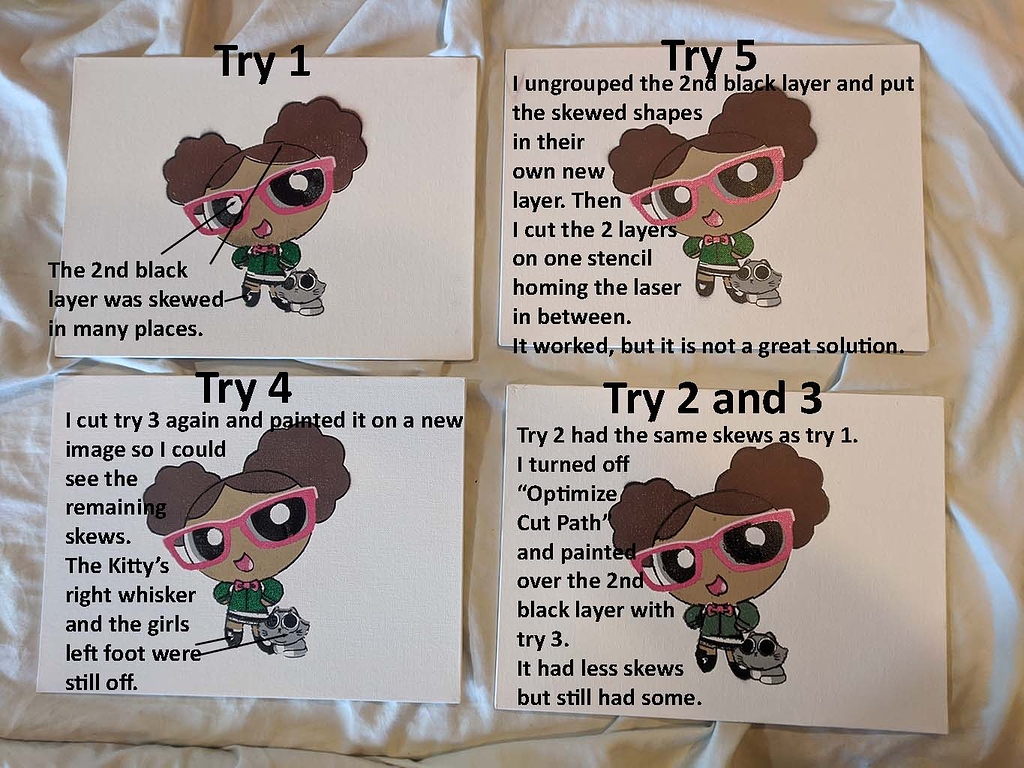

It basically just clusters a bunch of pixels into a single GCode move, allowing the motion planner to see further ahead than it could before (up to a max of 8x). The implementation doesn’t care which axis is involved, and will handle scanning at an angle too. Go to Edit → Device Settings and enable the toggle for “Smoothie Clustering” Make sure you are on the latest version of LightBurn, which at the time of this writing is 0.9.04. We have not tested with the older C3D Mini config files).

You’ll still need config.txt file on the memory card for whichever C3D Board you have for Smoothie Firmware to work properly, and we have tested this firmware with the stock files for the Cohesion3D LaserBoard and the “Batch 3” files for the Cohesion3D Mini (the last bunch of Mini’s shipped with that, and if you have a “Cohesion3D Mini v2.4 board”, which you can tell by the presence of a 2 pin male header near the USB port and the board being off when a USB cable is plugged into the computer, then your board most likely came with these files.

You’ll need to put this new firmware.bin file on your memory card and put the card back into the board while off, then power up the board and watch the green LEDs L1-L4 count up in binary to indicate that firmware is flashing. Dropbox Cohesion3D Smoothie Cluster Firmware

We’re happy to report that we have a new update for the Smoothie firmware that should allow it to go approximately 3 times faster than it could before, even slightly beating out GRBL-LPC in our internal raster speed tests. This is why we had the alternate GRBL-LPC firmware which allowed you to to run approximately 3 times faster, but it was not able to run files from the memory card, drive the Graphic LCD Screen, and have the more extensible configuration via the config file on the memory card. So when you try to do a grayscale image with a 0.1mm dot size/ 254 DPI at 80mm/s, that’s 800 gCodes per second right there and about the max that you could do before things started getting weird. This is due to a theoretical limit of only being able to process 1,000 gCodes per second, and more like 800 in real life. Up until now, the stock firmware (Smoothie) we have shipped on the Cohesion3D Boards has been great for cutting but has struggled with high detail raster engraving at higher speeds.


 0 kommentar(er)
0 kommentar(er)
